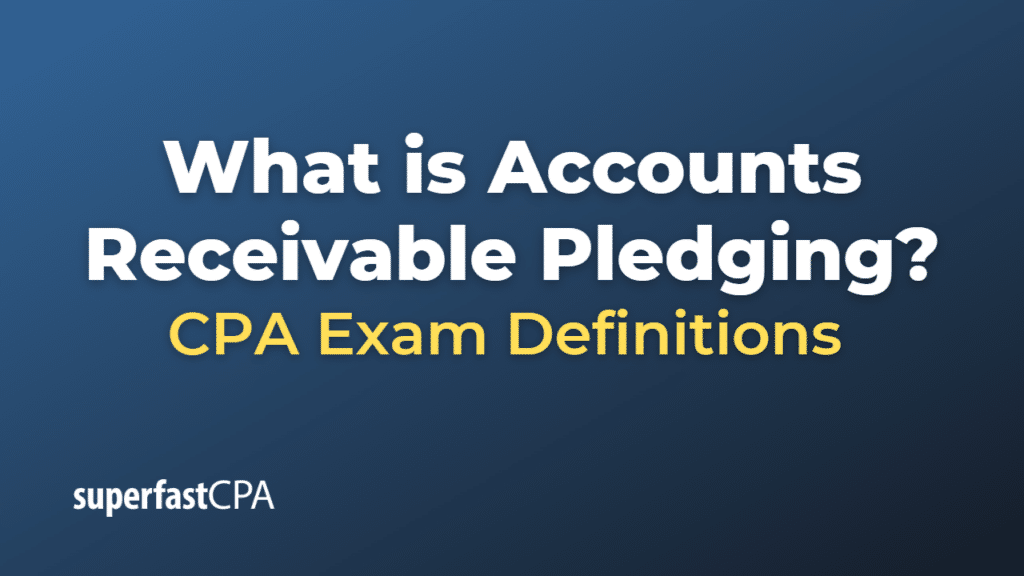Accounts Receivable Pledging
Accounts receivable pledging is a financing arrangement in which a company uses its accounts receivable (outstanding invoices) as collateral to secure a loan or line of credit from a financial institution, such as a bank. This type of financing enables businesses to access cash without having to wait for customers to pay their invoices, thereby improving cash flow and providing working capital to fund operations or expansion.
In an accounts receivable pledging arrangement, the company retains ownership of the receivables and remains responsible for collecting payments from its customers. The financial institution will typically lend a percentage of the total accounts receivable balance, depending on factors such as the creditworthiness of the company’s customers, the age of the receivables, and the company’s historical collection performance.
If the company fails to repay the loan or line of credit, the financial institution can seize the pledged accounts receivable and collect the outstanding amounts directly from the company’s customers to recover its funds.
It’s important to note that accounts receivable pledging is different from accounts receivable financing (factoring), where a company sells its receivables to a third-party financing company at a discount in exchange for immediate cash.
In summary, accounts receivable pledging is a financing method that allows companies to use their outstanding invoices as collateral for a loan or line of credit, providing access to cash and improving cash flow. Companies must carefully assess the costs and benefits of this type of financing and compare it to other available options before entering into an arrangement.
Example of Accounts Receivable Pledging
Here’s a simplified example of a company using its accounts receivable to secure a loan:
Fictional Company: “EcoLighting,” which sells energy-efficient lighting products to commercial clients on credit.
Outstanding Accounts Receivable:
- Total value: $100,000
EcoLighting approaches a bank to secure a loan using its accounts receivable as collateral. The bank agrees to provide a loan at an 80% advance rate, which means the bank is willing to lend up to 80% of the total value of the accounts receivable.
Loan Calculation:
- Loan amount: $100,000 (accounts receivable) x 80% (advance rate) = $80,000
EcoLighting receives an $80,000 loan from the bank using its outstanding accounts receivable as collateral. The company remains responsible for collecting payments from its clients and must repay the loan, plus interest, according to the agreed-upon terms.
If EcoLighting fails to repay the loan, the bank can seize the pledged accounts receivable and collect the outstanding amounts directly from the company’s customers to recover its funds.
In this example, EcoLighting uses accounts receivable pledging to access immediate cash, which can be used to fund operations or expansion. However, the company must carefully consider the interest and fees associated with the loan and ensure that it can repay the borrowed amount according to the agreed-upon terms.













